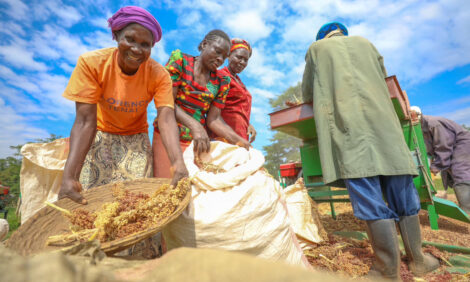



How the Cobb 500 Changed the US Market
Jessica Chesnut of Cobb-Vantress Inc outlines the history of a line of birds that started 30 year ago and has become the company's most successful so date. Focussing on increasing breast meat yield helped accelerate market demand for breast meat, not only in the US but around the world."If breast meat is worth $2 a pound and dark meat is worth $1, which do you think I’d rather have?” This was the question Don Tyson posed some 30 years ago at the International Poultry Exhibition. His reasoning lies at the foundation of the US poultry industry’s shift to a chicken with higher breast meat yield.
It was this quest for meat that brought the Cobb 500 broiler breeder to the United States and 2008 marks the 25th anniversary of its introduction. This breed was originally selected and developed in England during the 1970s when the more upmarket retailers were seeking a product that would look good on their fresh meat shelves.
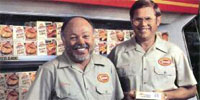
With the frozen chicken still dominant, there was growing interest in a chicken with a superior conformation that would look good as a fresh, air chilled product - one that would not show the sharp keel bone when tray-packed under clear plastic.
In the early 1970s the research and development team led by Janey Barnard had begun selecting breeding stock with a less pronounced keel bone - largely done through the ‘feel’ of the breast meat. In doing so they were selecting for birds with more breast meat, creating a fuller appearance on the existing broiler frame, which, in turn,made the finished product more appealing to consumers.
This was the start of the realization that broilers with the most breast meat offer the greatest return to the producer - and the beginning of the current Cobb success.
The name for the Cobb 500 actually came from a remark by Robert Cobb Junior who felt the new bird would be five times better than the Cobb 100 that had been the company’s mainstay for many years.
Cobb had begun as a family business - Cobb’s Pedigreed Chicks - in Littleton, Massachusetts, during 1916. It was acquired by the pharmaceutical manufacturer The Upjohn Company in 1974 during an era when several major poultry breeders were bought by drug companies.
The Vantress Breeding Company originating in the 1950s had one of the leading male lines, and it was acquired - ironically also in 1974 - by Tyson Foods. However, the Vantress female line lacked the characteristics needed to be commercially viable.
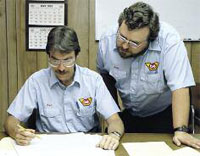
In the US, as in the UK, there was growing recognition that the market was changing. “Don Tyson saw further processing as the wave of the future,” says Chet Hobart, now retired, who was Cobb vice president of international operations as well as being involved in international contracts in the early years of the Cobb 500. “Tyson said, ‘We’re not selling chicks; we’re not selling eggs. We’re selling meat.’ ” A remark reinforced in a company video soon afterwards where he said: “We want more meat and less bones.”
In the search for a productive female that would fit this new direction, Tyson Foods sent three executives to England in 1980 - Aubrey Cuzick, Ed Rice and Leland Tollett who looked at both Cobb and Ross birds. The decision was made to go with the Cobb 500 over all other breeds, including the Cobb Breeder Pullet, a female line selected in the US.
A joint venture between Tyson Foods and Upjohn - known as Arkansas Breeders - was formed in 1982 to introduce the Cobb 500 to the US through the proper quarantine conditions and to register the breed. The next year a shipment of five cases (1800 eggs) was sent from England to the US. The eggs were landed in Honolulu for the initial inspection, then shipped to Houston on to Northwest Arkansas.
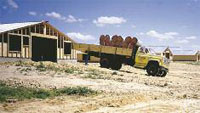
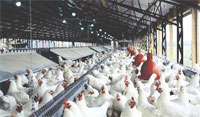
Once the eggs reached Highfill, Arkansas, the truck driver and Joel Truitt, a long-time employee of Cobb, met the USDA inspector to receive certification that the proper quarantine procedures had been followed. Interestingly, the inspector was a cotton inspector with limited knowledge of chickens, but he was qualified to sign the appropriate documents.
The eggs were set in two incubators placed in the end of a Northwest Arkansas chicken house on a farm leased by Tyson. After the eggs had hatched, all chicks were kept in quarantine at this location.
While Arkansas Breeders was importing eggs, Cobb also imported additional consignments of Cobb 500 pure line eggs from England to Massachusetts. Eggs arrived at Logan International Airport in Boston, received a numbered seal by an inspector and were then transferred by van to the Person Farm in Moultonborough, NH, where the seal was verified and opened by another inspector. The eggs were hatched and after quarantine on the farm were trucked to Arkansas.
“We were starting the pedigree pipeline, but it wasn’t a smooth start and we had problems with some of the initial shipments,” recalls Mark Glavey, who was involved in the quarantine process in New Hampshire and now manages sales for Cobb’s Asian division.
There were also acclimation issues, according to Dr Terry Wing, Cobb manager of product evaluation and genetic statistics. At first, the birds were not acclimatized to the Arkansas heat and the houses had not been equipped with evaporative cooling systems, resulting in high mortality.
After two years, enough birds had been accumulated to send to the Bear Hollow pedigree facility in Southwest Missouri to begin a breeding program with the Cobb 500.
* "We're not selling chicks; we're not selling eggs. We're selling meat" |
|
Don Tyson, Tyson Foods
|
In 1986 Tyson bought out Upjohn’s 50 percent in the Cobb business, bringing an end to the Arkansas Breeders venture – a move announced at the International Poultry Exposition in Atlanta. The company became officially known as Cobb- Vantress, Inc, with the corporate headquarters moving from Littleton to Siloam Springs under the direction Tony Barnes who had moved from the UK to become Cobb president in 1983.
In the early years of the Cobb 500, Tyson was the key customer. According to former Cobb president James Bell, Tyson was the primary customer for the Cobb 500 for several years, until other integrators realized the value of the bird.
“The Cobb 500 first took off outside Tyson after a local customer, OK Foods, saw its potential,” Bell said. “They were the key.We worked hand-in-hand with their people to increase egg production from those early flocks. And by doing so, we got more and more business from the industry. This was invaluable to Cobb’s growth because they were an independent integrator.”
When Tyson Foods, then the largest US integrator, began showing a strong interest in the Cobb 500 for its advantage in breast meat, this also generated increased demand in international markets. The UK-based Cobb Breeding Company was making substantial inroads into the market in Europe, Africa and Australasia. Now, following the US model, countries like Japan, Indonesia, Argentina and Brazil began using the Cobb 500.
By the early 1990s the reciprocal cross, the fast feathering Cobb 500 was deemed the better product for US. Tyson trialed this product and took it on where the company had been sexing to obtain heavier birds for deboning. Also, it appeared to be better at coping with hotter temperature after it had been bred locally.
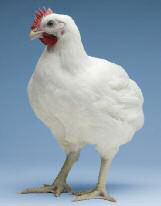
Today the Cobb 500 is the world’s most popular broiler breeder. Continued progress with the breed is maintained through the planned, systematic efforts of the Cobb research geneticists. Although originally selected for breast meat, the product has also been enhanced by improvements particularly in feed efficiency through a long term, balanced approach to selecting pedigree stock. With today’s high feed costs, efficient broiler feed conversion is a great advantage for any integrator.
“We are now in an era of trying to select birds based on far more than appearance,” said Dr John Hardiman, director of research and development at Cobb.
“Today, we are increasingly augmenting classical selection techniques with the use of DNA technology so that we can make selections based on the actual genotype of as well as the physical appearance or phenotype,” he added.
Cobb has demonstrated its commitment to long-term investment in research to continue development of the Cobb 500 and widen its product portfolio. “Progression, with products and as a company, is an ongoing thing,” says Jerry Moye, president of Cobb. “It never ends.”








